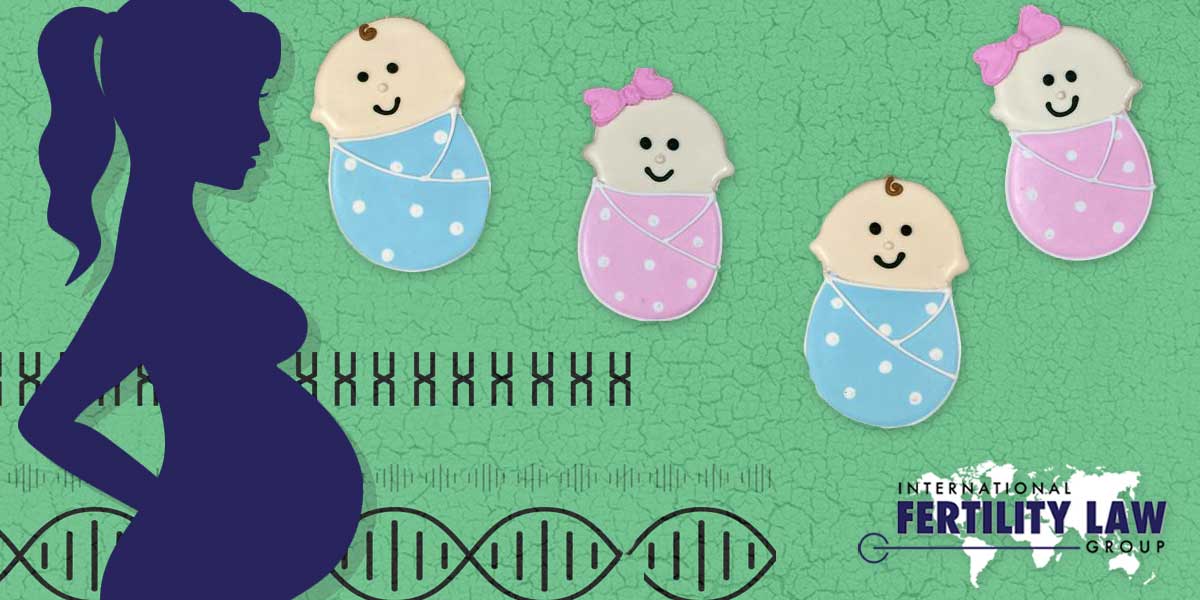
29 Jul 2021 Can Genetic Screening Help Choose the Healthiest Embryo?
Several companies now offer a new type of genetic screening to determine which embryos created with in vitro fertilization have a higher risk of developing common diseases such as diabetes or heart disease. The same technology is being marketed, and sometimes used, to select those more likely to be taller, creative and finish college.
But while the new genetic tests appeal to intended parents eager to give their babies the best possible start in life, a report published July 1 in The New England Journal of Medicine raises questions about the significance and usefulness of such screenings, as well as the ethics involved.
New Companies Claim to Predict Risk of Common Diseases
Typically genetic screening of embryos before implantation is an option available to intended parents to identify potential disorders caused by a single gene, such as Huntington’s disease, or by an entire chromosome, such as Down syndrome.
Now several companies, including Orchid and MyOme, are offering an additional type of genetic test called a PRS, or polygenic risk score, to predict the lifetime risk that an embryo will develop a host of other common diseases, such as heart disease, cancer, diabetes or schizophrenia.
Rather than screening for a discrete gene or chromosome, these new genetic tests rely on tiny snippets of genes that may, combined with other factors, indicate a higher likelihood that an embryo will be born with certain traits or disorders.
As genetic counselor Kyle W. Davis wrote recently for Slate, rather than comparing entire genes, PRS models “compare common genetic changes called single-nucleotide polymorphisms—SNPs for short, pronounced ‘snips.’ These SNPs are single-letter differences in the DNA, whereas a gene is between several hundred to more than 2 million letters long. A gene codes for a protein, but SNPs may slightly alter how a gene is translated into a protein, or how the resulting protein functions. When studied in large groups, SNPs show small but significant correlations that suggest they influence inherited conditions. Using advanced statistics, researchers create a model using anywhere from dozens to millions of SNPs that influence the risk of a condition, adding them together for a composite score—the PRS.”
PRS Tests May Be Less Useful in Embryo Selection
Companies such as 23andMe, which markets direct-to-consumer genetic tests that provide risk information for conditions including Parkinson’s, Alzheimer’s and celiac disease, have been using PRS models for years. Consumers can use the information to manage their own health, perhaps scheduling more frequent colonoscopies or heart checkups in response to a report of heightened risk.
But the authors of the NEJM report warn that beyond identification of potential disease risk, some companies are advertising screening for other conditions and traits, such as cognitive ability, education and income. As recently as December 2020, according to the report, Genomic Prediction, one of the first companies to offer genetic risk assessment for embryos, advertised that it could screen for intellectual disability, although the claim does not appear on the company website now.
Even as the new models become increasingly popular with consumers, the “hype” surrounding them may overstate their accuracy or their value to the individual patient, as Davis writes in Slate.
“In 2018, researchers created a model using more than 6 million SNPs to stratify risk for coronary artery disease. Although this was an achievement, a follow-up study adding this PRS model to conventional risks (such as age) found that the model failed to predict heart disease any better than conventional risks did alone…. Researchers expect to discover more SNPs that influence coronary artery disease in the future, which they can use to improve PRS models. But insufficient knowledge is a problem for essentially all current PRS models.” [our emphasis]
Many IVF and genetics experts are questioning the usefulness of PRS modeling for selecting embryos for similar reasons.
To begin with, PRS prediction models were developed by examining the genes of thousands or millions of individuals, mostly unrelated by blood. But a group of embryos created by the same parents will be genetically very similar and will not exhibit the same degree of genetic variance as the populations on which the models are based. Therefore any variations that make it more likely one embryo will have a condition than another will be miniscule, possibly so tiny it won’t make much, if any, difference in the outcome.
Additionally, the PRS models were developed primarily from European populations, rendering the predictions much less accurate for intended parents who are of a different ethnic heritage.
According to a 2019 report published in Nature, of 733 studies used to build PRS models between 2008 and 2017, 67 percent were limited to people of European ancestry, while just 3.8 percent included people of African, Latino/Hispanic, or Indigenous ancestries. Not surprisingly, when PRS models were applied to people of African ethnicity, the predictive ability was roughly 68 percent worse than when applied to people of European descent.
Embryo Traits Determined by Multiple Genes, Other Factors
There is also the age-old question of nature versus nurture: The long list of conditions and attributes companies claim to screen for may be impacted or changed by interaction with other genes or by the environment in which the child is raised. And in the still-evolving field of genetic screening, there is plenty that scientists still don’t fully understand. For example, genetic traits that appear to predict creativity can indicate an increased risk for schizophrenia. In another study, researchers selecting for educational attainment also found increased risk for bipolar disorder, according to the healthcare news journal Stat.
Genetic testing also raises ethical issues. Even as expanded insurance coverage and employer health benefits gradually make fertility treatment such as IVF more accessible for more people, the high costs of in-depth genetic screening may mean it is less available to poor or low-income people. “This is an intervention that is never going to be available to everyone,” Leila Jamal, bioethicist and associate director for cancer genomics at the Johns Hopkins Bloomberg School of Public Health Genetic Counseling Training Program, told Slate.
Likewise, if wealthy people are able to screen for progeny free of disease (or taller, stronger or more handsome), how will that magnify the inequities in health care and wealth that already exist in our society? The practice of selecting embryos to avoid certain traits, such as intellectual disability sends a message to the greater society, medical ethicist Gabriel Lázaro-Muñoz told Slate. “We have these companies telling us, in a way, these embryos are lives that are more worth living.”
Equal access aside, the PRS models will be most accurate and most useful for the population on which they were modeled. Intended parents of color who opt for the additional screening should be aware that the results will have less relevance and yield less reliable information until PRS models more specific to them are available.
Consumer Education Essential to Weigh Benefits of PRS Tests for Embryos
Genetic PRS testing and new developing gene therapies will transform health care and may someday eliminate many diseases entirely. But it is still an emerging science.
The authors of the NEJM report express concern not only about the use of PRS testing to predict disease in embryos, but, in the largely unregulated field, about its use in screening for other physical and personality traits. As Hannah Wand, director of preventive genetics at Stanford University, told Slate, “We have a tendency in genetics to put out tests when they’re technically feasible. We have not yet figured out how genetics integrates with routine life and public health.”
The NEJM report authors point out companies’ responsibility to communicate clearly what the results mean and don’t mean and how accurate and appropriate they are for each individual. Intended parents who choose the additional testing should be fully informed about what the results do and do not indicate.
The report also urges increased government oversight as companies unveil new tests. The U.S. Federal Trade Commission prohibits companies from misleading consumers and should develop protocols for investigating companies claims and the scientific evidence behind them.
For intended parents who have sacrificed emotionally, physically and financially to create a family using in vitro fertilization, the ability to select the embryo least likely to become ill in adulthood and most likely to succeed in life is certain to be a hot ticket. As the science evolves and more companies enter this lucrative market, it will be important for intended parents and their health care providers to be educated and realistic about both its benefits and its limitations.
Considering using assisted reproduction for family building? Contact our experienced team of fertility attorneys and paralegals to find out how to ensure your family is legally protected.

















